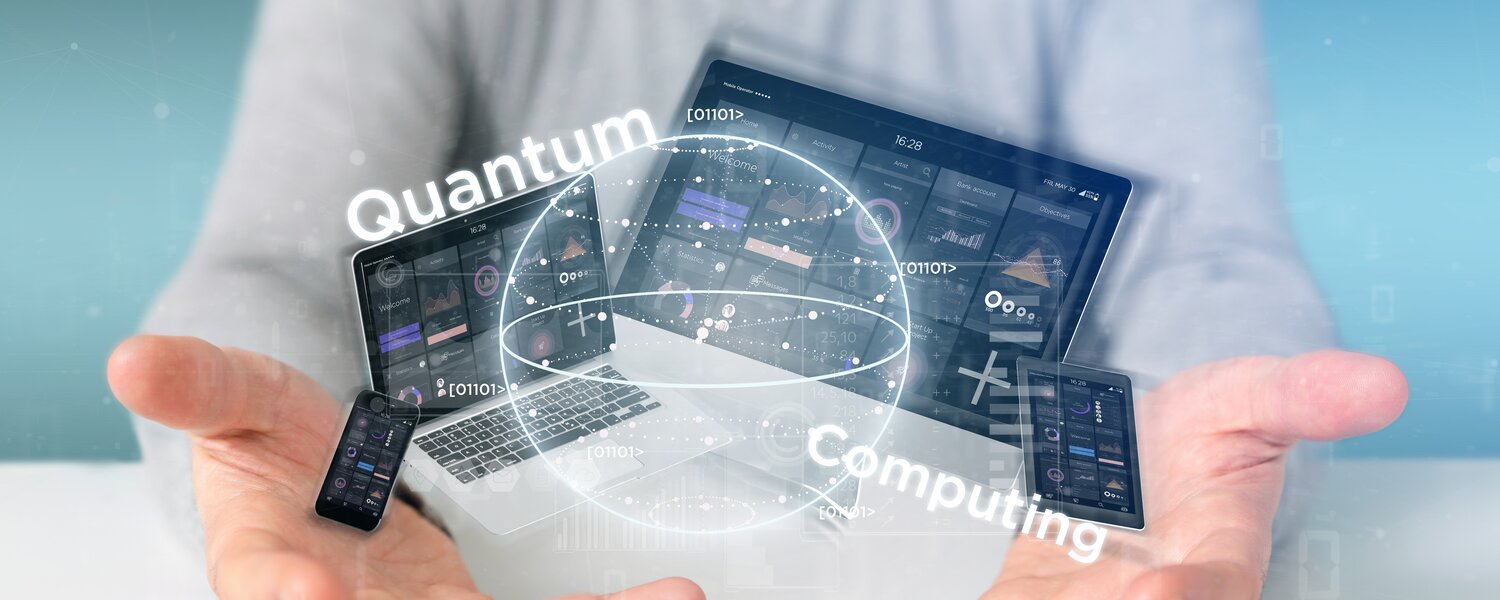How quantum computers work

Reading time:
minutes
The exact functioning of quantum computers seems incredible, almost magical, to many people. This is because the laws of quantum mechanics contradict our everyday experiences. Nevertheless, everyone can understand at least the basic features behind the technology of quantum computing.
From bits to qubits
If you want to understand how a quantum computer works, you first have to start with that of a normal computer. Every calculation that a computer performs, no matter how complex, is based on so-called binary code. In the processor, there are a large number of bits that are either on or off. They can therefore assume two states and change them at will. In this way they can encode and process numbers and therefore all kinds of data.
The rapid development of the last century is due to the fact that individual bits became smaller and faster. As a result, modern processors can perform computing operations in the same amount of time. So they are literally 'faster'.
However, quantum computers do not work with conventional bits, but with so-called quantum bits, or qubits for short. In order for the laws of quantum mechanics to take effect, qubits must be very small. Some research teams work with single ions as qubits. Others, such as Google or IBM, are designing quantum computers based on superconductors. In these, the right conditions for quantum mechanical processes also prevail at low temperatures near absolute zero.
Qubits can have not only two states. They are in all possible states simultaneously at any time - at least as long as nobody observes them. If you measure their value, it can only be 0 or 1. However, the calculations carried out previously result in different probabilities in this respect. This limitation makes it clear why the development of quantum computers is so complicated: after all, the main task of any program is to present an exact result at the end.
Quantum entanglement and quantum parallelism
Quantum computers have two other advantages over conventional computers that make them so incredibly powerful. Namely, qubits work not only as lone wolves, but also as a team. Through so-called quantum entanglement, they influence each other. As a result, multiple qubits become more than the sum of their parts, and can therefore contain more information than individual qubits.
The second important property of quantum computers is the so-called quantum parallelism. Since qubits can be not only 0 or 1, but also all states in between, they can store more than one piece of information at a time. Unlike a row of bits, a row of qubits can hold an incredible amount of data and process it simultaneously. This is what makes quantum-based computers so incredibly efficient when it comes to analyzing large data sets.
See the entire blog series "How Quantum Computers Will Revolutionize Digital Marketing" here.
- Quantum computing in a nutshell - what is it?
- These quantum computers already exist
- How quantum computers work
- Advantages and disadvantages of quantum computing in relation to digital marketing.
- Applications of Quantum Computing
- The revolutionary technology of quantum computing
- Quantum Computing in Digital Marketing Part 1
- Quantum Computing in Digital Marketing Part 2
- Cybersecurity in times of quantum computers
- Conclusion: The future of quantum computing in digital marketing

